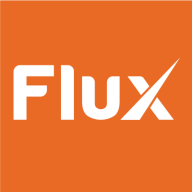

Flux and JAMS compete in the workflow automation solutions category. JAMS stands out due to its robust features and often higher perceived value.
Features:Flux offers high flexibility, real-time adjustments, and adaptability. JAMS provides robust scheduling capabilities, extensive integration options, and intricate automation solutions.
Ease of Deployment and Customer Service:Flux supports straightforward deployment with active customer service. JAMS enhances complex implementations with detailed documentation and superior customer service, often resulting in smoother deployment experiences.
Pricing and ROI:Flux has lower upfront costs, ensuring quick ROI. JAMS, while having a higher initial cost, offers long-term returns with comprehensive functionalities, suitable for complex organizational needs.

Flux is an essential tool for data migration, system integration, and real-time data processing, offering scalable solutions that support large datasets and streamline workflows.
Users leverage Flux for managing complex environments with large datasets, automating workflows, and enhancing data consistency across platforms. Its capabilities in real-time data processing, synchronization between different systems, and operational efficiency improvement are frequently highlighted. Users commonly find it flexible and reliable, appreciating its performance in managing scheduled tasks and simplifying data orchestration.
What are Flux's key features?Flux is used across industries like finance, healthcare, and logistics for streamlined operations and optimized data management. In finance, it supports data integrity and compliance. Healthcare organizations use it for real-time patient data processing and integration with various systems. Logistics benefit from improved tracking and coordination.
JAMS offers efficient automation and scheduling with strong capabilities in planning, dependency management, and multi-platform support. Its intuitive interface and robust tools assist in managing complex workflows for enhanced resource allocation.
JAMS stands out for its blend of automation and scheduling capabilities, making it suitable for handling complex workflows across platforms. Its features such as batch scheduling, natural language scheduling, and interactive agents promote seamless integration with other tools like PowerShell. The focus on metrics and notifications ensures users are informed about operational efficiency enhancements. While JAMS is effective in many areas, users report a need for improved simulation for termination processes and a more intuitive client setup. They see potential in enhanced search functions, better exception handling, and greater transparency in custom execution. The current setup challenges like disappearing options and mobile accessibility can affect user satisfaction. Including a fully web-based client and improving documentation could add value.
What are JAMS' key features?Organizations using JAMS for workflow and batch job automation leverage its capabilities for SSIS, SQL procedures, and Python scripts. JAMS supports file automation and managed file transfers across environments like AWS and Azure. Users employ JAMS for data management, reporting, and integration tasks, including handling holiday-aware scheduling for improved task coordination.
We monitor all Workload Automation reviews to prevent fraudulent reviews and keep review quality high. We do not post reviews by company employees or direct competitors. We validate each review for authenticity via cross-reference with LinkedIn, and personal follow-up with the reviewer when necessary.